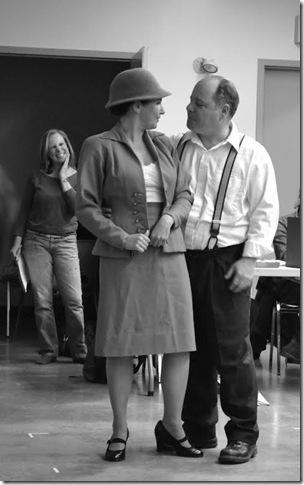Drama at Inish. Melodrama by the sea.
Photo: Ottawa Little Theatre
The moral of the story is that too much heavy drama is bad for your health.
Making a joke about the dangers of being influenced by overdoses of Ibsen, Chekhov, Tolstoy and Strindberg might be sustainable for a one-act play, but the central gag of this parody wears a little thin through a full-length comedy.
But, director Sarah Hearn gives it her all in the Ottawa Little Theatre/Tara Players co-production of Lennox Robinson’s 1933 domestic comedy Drama at Inish. (It is rumoured that the playwright’s theatrical birth came after seeing a traveling theatre troupe perform an Ibsen play in his native Dublin, so one can assume he is poking fun at himself.)
In an effort to maximize the humour in the play, Hearn pushes the melodrama button hard, as cast members emote, swoon, beat their heads against mantlepieces and raise trembling hands to fevered brows.










